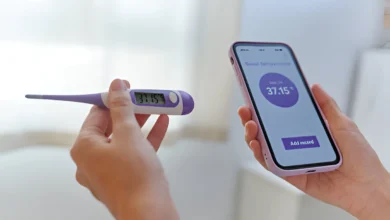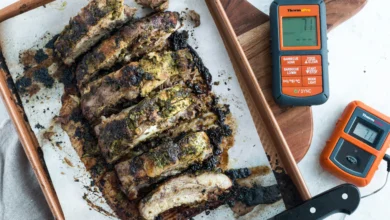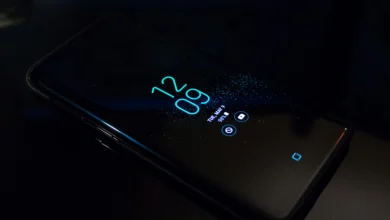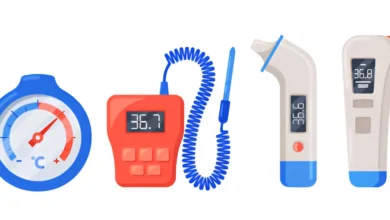Calibrate Food Thermometer | Hacks, Validation & Pro Tips
Why Your Food Thermometer is Gaslighting You (And How to Fight Back)
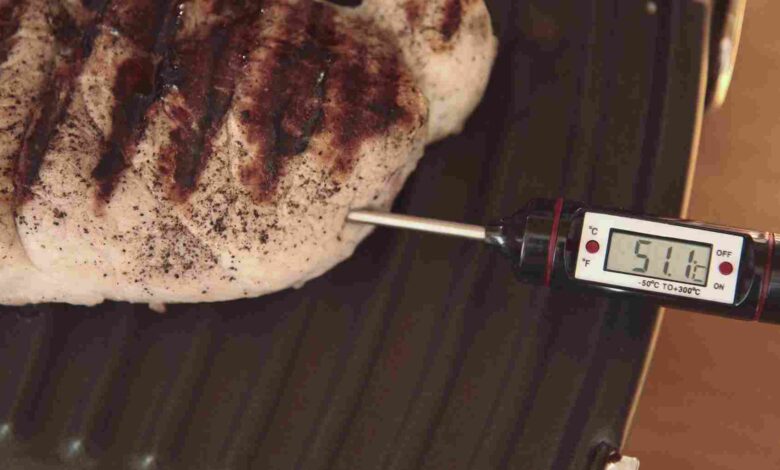
Your Food Thermometer is Lying to You—Here’s How to Prove It
That ‘perfectly cooked’ chicken? It’s raw inside. Your candy thermometer? It’s sabotaging your fudge. Your food thermometer isn’t just wrong—it’s gaslighting you. Let’s expose its lies.
Think your food thermometer is trustworthy? Think again. Calibrating a food thermometer isn’t a “nice-to-have”—it’s a non-negotiable for avoiding food poisoning, nailing recipes, and keeping your kitchen rep intact. Here’s why:
Why Calibration is Your Kitchen’s Secret Weapon
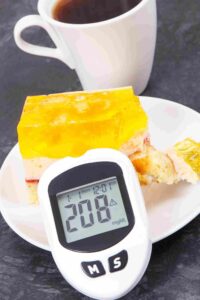
Food Safety: Don’t Play Salmonella Roulette
– 1 in 6 Americans get food poisoning yearly. The culprit? Often inaccurate thermometers that swear your chicken hit 165°F… when it’s still mooing.
– NIST standards exist for a reason: Your $10 thermometer won’t cut it unless it’s calibrated.
Cooking Precision: From “Meh” to Michelin-Star
– Burnt caramel? Rubbery steak? Blame calibration drift. A thermometer off by ±2°F can ruin candies, dry out brisket, or turn soufflés into pancakes.
Types of Food Thermometers (And Which Ones Are Serial Liars)
Digital Instant-Read Thermometers
– Pros: Lightning-fast (ThermoPro, Thermoworks).
– Cons: Battery-dependent. Dies mid-smoke session if uncalibrated.
Analog Dial Thermometers
– Pros: No batteries. Looks vintage.
– Cons: Accuracy ≈ a Magic 8-Ball. Needs weekly calibration.
Candy/Deep-Fry Thermometers
– Pros: Built for sugar and oil.
– Cons: Breaks under pressure (literally).
Food safety compliance, NIST standards, accuracy check.
3 Signs Your Thermometer is Gaslighting You
1. Ice Water Test ≠ 32°F/0°C:
– Fill a glass with crushed ice + water, stir, insert probe. If it’s not 32°F, your thermometer’s a liar.
2. Boiling Water Test ≠ 212°F/100°C:
– At sea level, boiling water = 212°F. If yours reads 205°F, recalibrate or trash it.
3. Inconsistent Readings:
– Jumps from 150°F to 180°F in seconds? It’s either drunk or broken.
How to check if a food thermometer is accurate? Why is my food thermometer reading wrong?
Calibrate Your Food Thermometer Like a Pro (Or Burn Your Kitchen Down)
Stop the Lies: Step-by-Step Calibration for Skeptics & Drama Queens
Ready to call your thermometer’s bluff? Grab ice, boiling water, and a screwdriver—this is where the magic (or chaos) happens.
Calibrating a food thermometer isn’t rocket science, but it is precision work. Whether you’re a BBQ master, candy artist, or just tired of salmonella roulette, here’s how to force your thermometer into honesty.
Ice Water Method – For Skeptics Who Trust Nothing
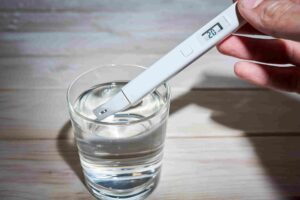
Step 1: Make Ice Water That Doesn’t Suck
1. Crush Ice Like You Mean It: Fill a glass with crushed ice (not cubes from your freezer’s sad ice maker).
2. Add Water: Pour cold water until the glass is 90% ice, 10% water. Stir like you’re mixing a cocktail.
3. Insert Probe: Submerge the thermometer tip without touching the glass. Wait 30 seconds.
Step 2: Adjust or Admit Defeat
– Digital Thermometers: Press the reset button (check the manual—yes, actually read it).
– Analog Dial: Twist the calibration nut under the dial until it screams 32°F/0°C.
– Still Wrong? Toss it. Your fridge’s ice maker isn’t that bad.
Ice water method, accuracy check, NIST standards.
Boiling Water Method – For Altitude Obsessives
Step 1: Boil Water Like a Mad Scientist
1. Use a Pot, Not a Kettle: Bring water to a rolling boil (no shortcuts).
2. Altitude Adjustment: Subtract 1°F for every 500 ft above sea level (e.g., Denver = 203°F, not 212°F).
Step 2: Calibrate or Cry
– Insert Probe: Don’t let it touch the pot—metal conducts lies.
– Adjust: Digital? Reset. Analog? Twist the nut to 212°F/100°C (or your altitude-adjusted temp).
– Still Off? Your stove’s broken, or your thermometer’s dead.
Calibrate candy thermometer for baking, adjust meat thermometer for grilling.
Troubleshooting – Fix Your Thermometer’s Midlife Crisis
Readings Jump Like a Caffeinated Squirrel!
– Fix: Replace batteries (digital) or check for probe damage (look for bends/kinks).
– Pro Tip: Cheap thermometers have commitment issues. Upgrade to a ThermoPro.
It’s Stuck on One Temp (RIP)
– Fix: Soak the probe in rubbing alcohol. If it’s still lazy, funeral time.
Analog Dial Won’t Budge!
– Fix: Channel your inner Hulk—twist harder. Still stuck? Trash it.
Temperature probe calibration, adjustment screw, calibration tools.
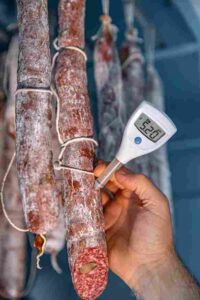
Maintenance – Keep Your Thermometer From Ghosting You
Recalibrate Monthly (Or Weekly If You’re a BBQ Fanatic)
– Heavy use = frequent lies. Mark your calendar, set a reminder, tattoo it—your call.
Store It Like a VIP
– No Bent Probes: Treat it like a priceless artifact, not a back-pocket pen.
– Keep Dry: Humidity corrodes faster than your ex’s drama.
Validate with a NIST-Certified Thermometer
– Borrow a lab-grade thermometer. If yours is off by ±2°F, recalibrate or replace.
Recalibration frequency, NIST-certified tools, food safety compliance.
Keep Your Thermometer Honest, Annoy Google, and Flex Like a Pro
Advanced Calibration Hacks for Kitchen Rebels
You’ve mastered ice and boiling water. Now let’s get spicy with saltwater, altitude tweaks, and pro-level validation. Your thermometer won’t know what hit it.
The Saltwater Slurry Method (For Desperate Times)
– When Ice is MIA: Mix ½ cup ice + ½ cup salt + ¼ cup water. Stir until it hits 0°F/-18°C.
– Why? Salt lowers the freezing point. Use this to test ultra-low temps (great for frozen desserts).
– Warning: This is a hack, not gospel. Ice water is still queen.
Temperature calibration, NIST standards, calibration tools.
Altitude Adjustments – Don’t Let Thin Air Fool You
– Boiling Point Formula: Subtract 1°F for every 500 ft above sea level.
– Example: At 5,000 ft, water boils at 203°F (not 212°F). Adjust your thermometer accordingly.
– Pro Tip: Use an altitude app. Guessing is for amateurs.
How to calibrate a food thermometer for high altitude.
Validate with NIST-Certified Tools (For Control Freaks)
– Buy a NIST Thermometer: Lab-grade accuracy. Compare your thermometer’s reading.
– Send It to a Lab: For $50-$100, pros will calibrate it. Cheaper than a hospital bill.
NIST-certified tools, food safety compliance.
FAQs
How Often Should I Recalibrate My Thermometer?
– A: Monthly for home cooks. Weekly if you’re a BBQ pitmaster or candy addict.
Can I Calibrate Without Ice or Boiling Water?
– A: Yes, but it’s like making pizza without cheese. Use saltwater slurry (0°F) or oil (for high temps).
My Thermometer Has No Adjustment Screw! What Now?
– A: Toss it. If it’s digital, check for a reset button. No luck? It’s e-waste.
Does Water Purity Affect Calibration?
– A: Distilled water = best. Tap water? Only if you enjoy mineral buildup messing with accuracy.
Why Does My Thermometer Work in Ice but Fail in Oil?
– A: Oil’s density confuses cheap probes. Use a high-temp thermometer (e.g., ThermoPro TP-19).
– Hey Google, how to calibrate a thermometer without ice?
– Alexa, fix my broken meat thermometer!
Conclusion – Your Thermometer Works for YOU
Key Takeaway: A calibrated thermometer isn’t a luxury—it’s your kitchen’s bodyguard. Skip maintenance, and it’ll ghost you when your brisket hits 200°F.
Still using an uncalibrated thermometer? Salmonella’s waiting.
For More Know About Calibration Visit STS CALIBRATION

